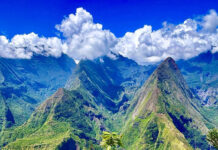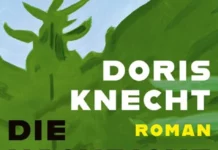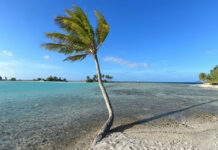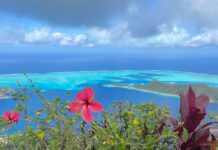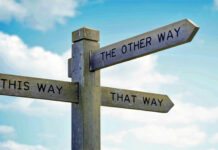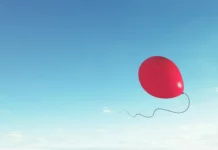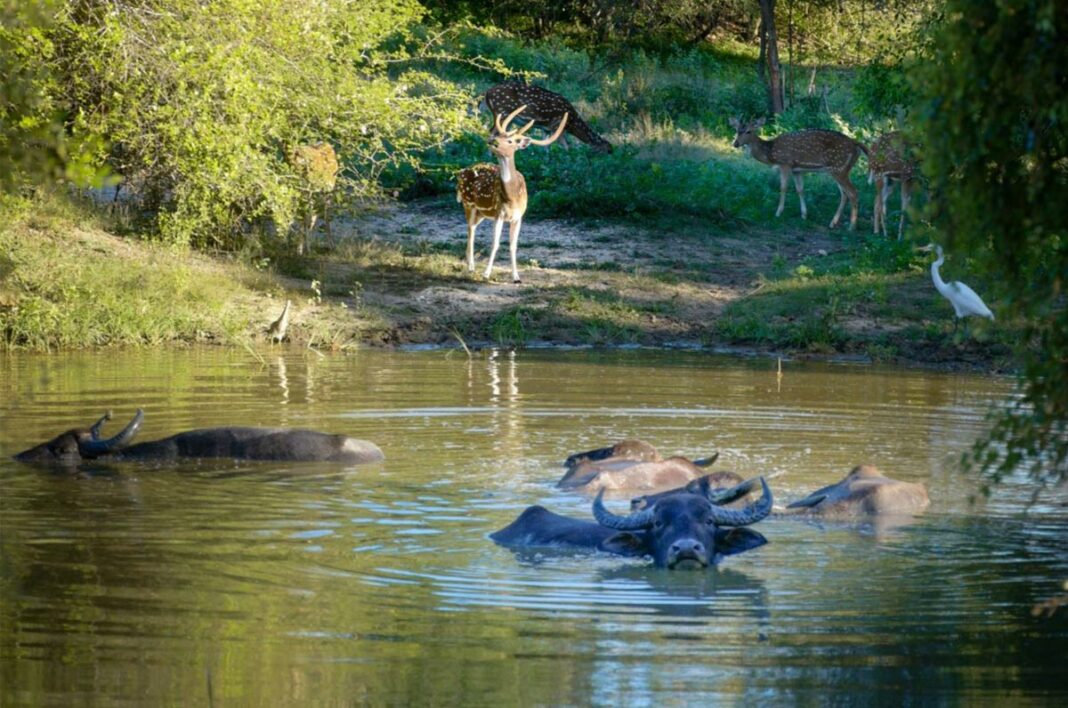Sri Lanka’s contours resemble a teardrop or a precious stone. There are plenty of both in this beautiful country. Tears shed over the loss of kingdoms, as evidenced by the 1.500-year-old ruins of the ancient World Heritage sites of Arundhadnapura and Pollonaruwa, uprisings against British colonial rule, the civil war between Tamils and Singalese and now, the economic situation. The parliamentary elections took place just a few days ago. The voter turnout was very high at 75% and it was a big issue everywhere. A lot depends on it for the economically ailing country to recover from its national bankruptcy. Everyone is hoping that the new, Marxist-orientated government, with its two-thirds majority, will free the country from its debts after the economic collapse in 2022 and lead it into a golden future.
As tourists, we don’t notice any of this. The people are friendly and keen to show us a good time. They smile, despite their worries, because tourism has not yet returned to the same level since the coronavirus era.
Arundhadnapura
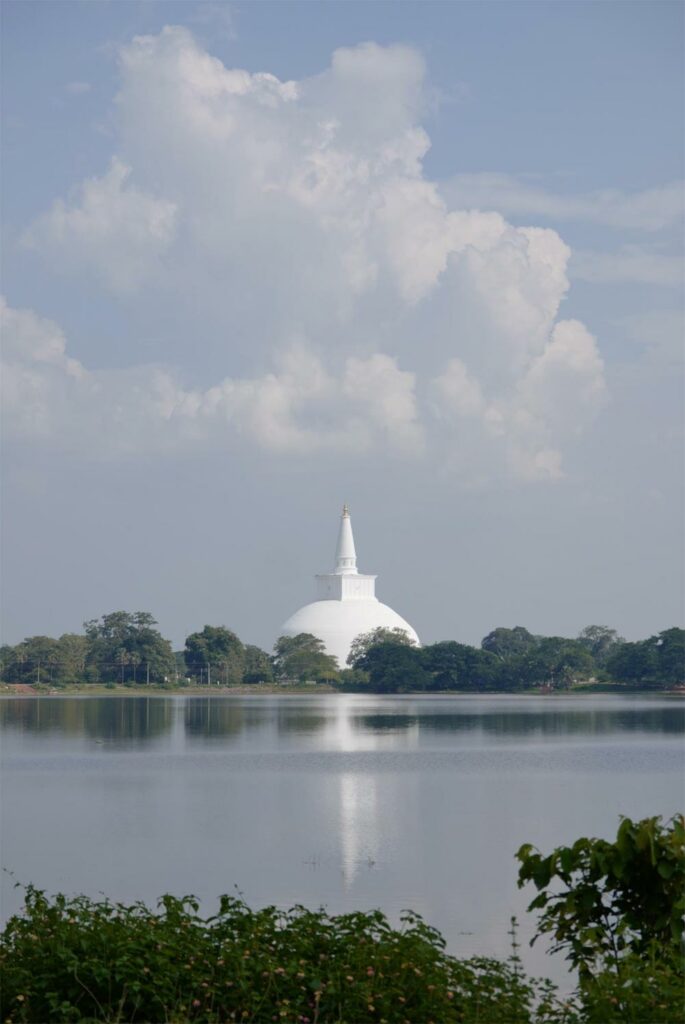
In Arundhadnapura we see completely renovated and impressive large stupas, the largest in South-East Asia. Stupas and temples are the holy places of the Buddhists. These bell-shaped, solid buildings are built around a relic, similar to the pyramids, only they are not burial sites.
Around 100,000 people lived in this highly developed capital from the 3rd century BC until the early 11th century, when it was destroyed by Tamil troops. Ruins and the oldest historically documented tree on earth, an offshoot of the sacred Bodhi tree under which Buddha attained enlightenment, still bear witness to its former splendour. It is surrounded by a golden fence, its branches are supported by golden steles, and it is specially guarded, as it is a sanctuary in the Buddhist world. Pilgrims dressed in white bring their offerings here.
A particularly popular offering for monks is a pre-packed parcel containing a belt, incense sticks and socks – the practical basic gift for monk and nun, so to speak. Clouds of incense sticks and a sea of candles, lotus flowers and murmured prayers bear witness to the importance of this soulful place. Once the children have been happily born, illnesses healed and wishes fulfilled, the faithful come here to show their gratitude with their gifts.
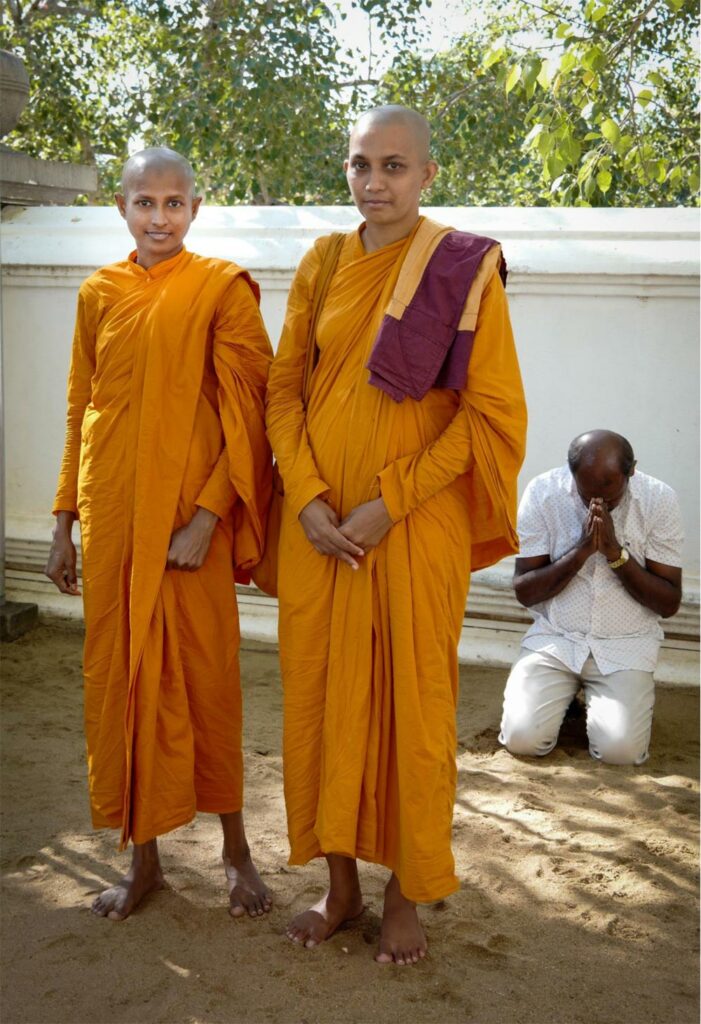
Lion Rock
Early in the morning, I join the queue to climb Lion Rock. There are many steps and stairs before you reach the summit. The expansive view of the countryside and the many reservoirs, which the people built long ago to irrigate their fields and for their drinking water, are still preserved and in use. There are said to be more than 300 in this region.
Only the foundations of the royal palace are still visible, but similar to Machu Picchu in Peru, you can sense the power and magic that this place once exuded. Impregnable and unreachable for most of his subjects, the king was enthroned above his country until his brother threw him and his troops off it, his soldiers defected to the enemy, and he took his own life as a result. The story of power and how it turns against you: classic, timeless and highly up-to-date.

After Arundhadnapura was abandoned, a kingdom emerged in Pollonaruwa, which flourished from 1070 until the 13th century. As in Angkor Wat, three kings ruled in succession and built incredibly magnificent buildings, some of which were nine storeys high. After its heyday, it fell into disrepair and was forgotten. For those interested in history, there is more information here https://www.sahapedia.org/kingdom-of-polonnaruwa.
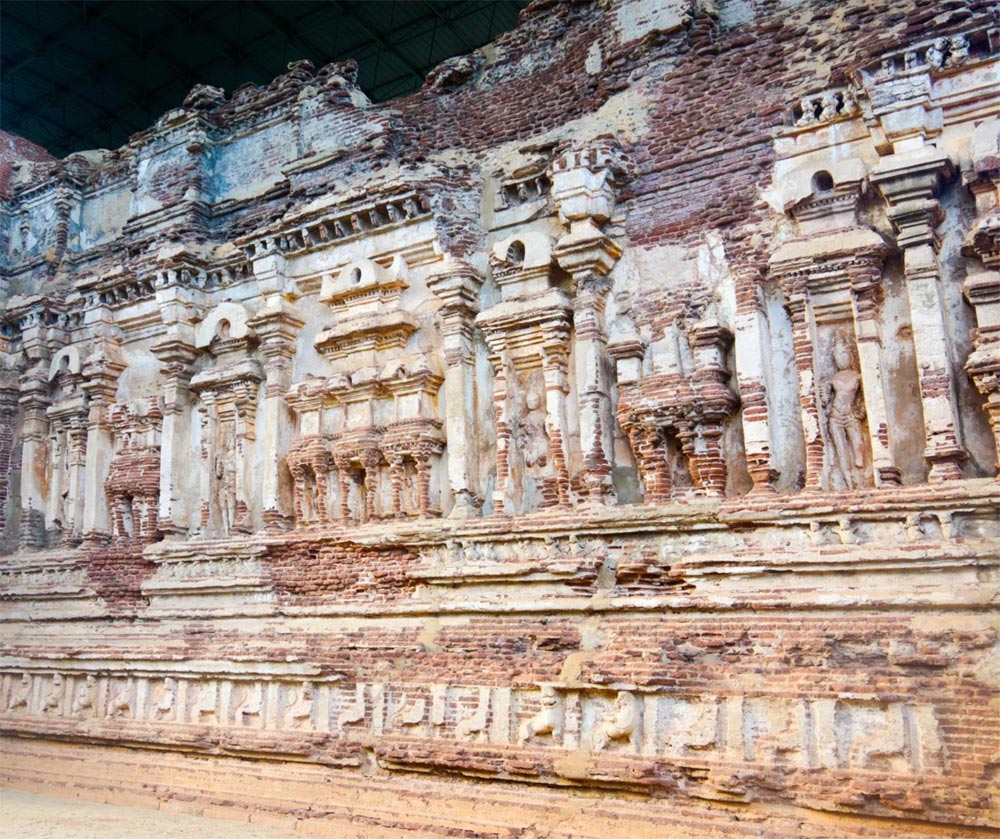
We spend a whole day among the ruins, some of which are very well preserved, then we switch from culture to nature and fly south to go on a safari in Yala National Park. Domestic flights are a rather unusual method of transport in Sri Lanka. The local airline Cinnamon Air has a seaplane and a small Cessna, which they use to take off and land on military bases. In order to enter these bases, we have to answer a lot of questions and fill out a lot of paperwork. In the end, we are the only passengers and feel like we are travelling on a private plane.
Yala National Park
Once we arrive in the south, we stay in a very authentic safari lodge right by the sea. In the evenings, guests are occasionally visited by elephants, which also happened on our first evening. From the outdoor terrace, we see him standing in the dunes less than ten metres away. But he doesn’t come any closer and after a while of waiting, he finally trolls off.
The national park is 1,000 square kilometres in size. Every day at six o’clock in the morning, the safari vehicles queue to enter the park. The first safari of the day takes about four hours, until the sun is too high on the horizon. In the early hours of the morning, the animals come out of their hiding places and stretch out in the sun, energising themselves for the day.
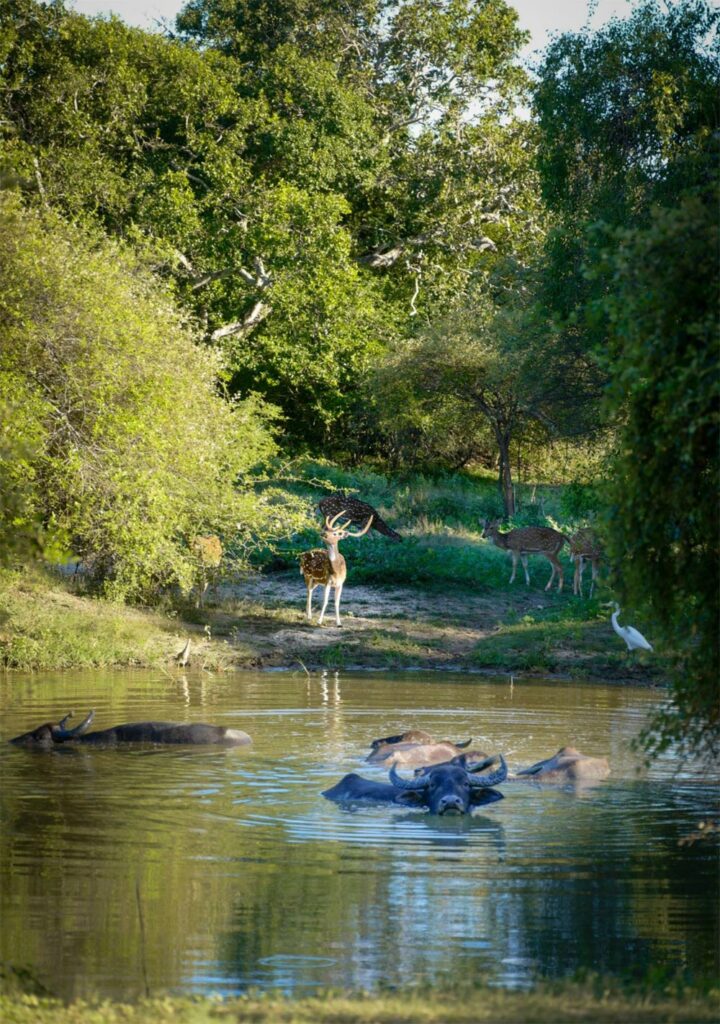
Elephant calves are out foraging with their mothers, the water buffalo wallow in the mud and the birds greet the fresh day with competing and enticing songs. The deep blue of the ocean shines between the trees, bushes, and striking rock formations. It is a wonderful atmosphere, through which herds of deer and peacocks stroll with their feathers spread open. A day could hardly start more beautifully.
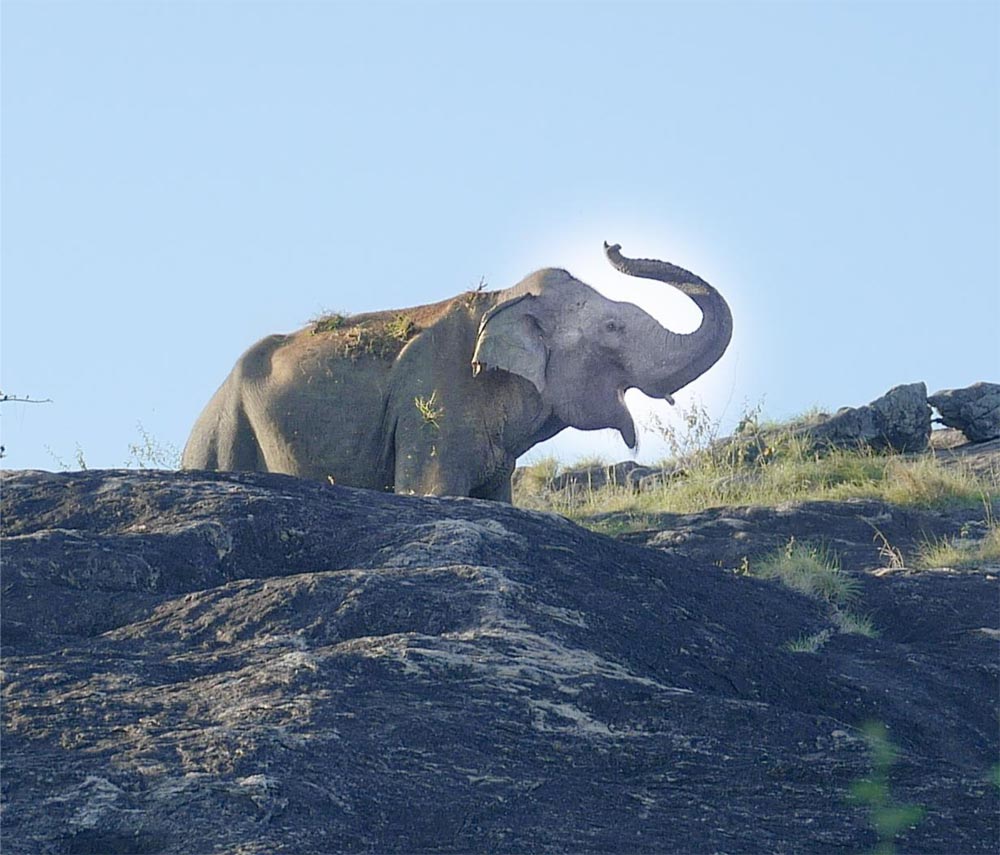
From the national park, the journey continues to the southern beaches. Here the waves thunder, the gout is in the air. It’s whale season for blue whales, but the method of whale watching is, like in the Dominican Republic, not very animal friendly. It’s better to enjoy the sound of the waves, drink a glass of wine with your feet in the sand and stroke one of the countless beach dogs, which all settle down peacefully at the feet of the guests. A week full of fascinating images and impressions comes to an end, unfortunately, because there is still a lot to discover.


